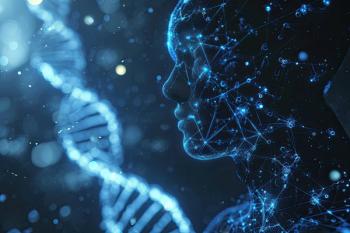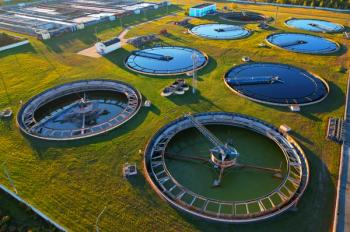
Hot Topics in HPLC Part III:
This is the third in a series of articles exploring topics planned for the HPLC 2020 conference in San Diego, from June 20 to 25. Although COVID-19 is putting most conferences in doubt, we are proceeding with this article series, which not only provides a conference preview but also provides insight into hot topics in high performance liquid chromatography (HPLC).
This is the third in a series of articles exploring hot topics in high performance liquid chromatography (HPLC). Although originally planned as a preview of the HPLC 2020 conference, which has been postponed to June 2020, the series provides insights into important developments in the technique.
Nanochannel electrophoresis (nano-CE) offers some unique separations capabilities that are not possible with microchip capillary electrophoresis (µCE). Making the columns out of thermoplastics instead of glass opens up even more opportunities.
Although microchip capillary electrophoresis (µCE) has demonstrated success for separating different molecules (1–3), recent efforts are exploring the utility of nanochannel electrophoresis (nano-CE) because unique separations are possible when operating with column dimensions on the nanometer scale (4–7). For example, it has been shown that double stranded DNA (dsDNA) can be separated in nanochannels without the need for a sieving matrix when the channel dimensions are on the order of the Debye length (λd) (7). By comparison, free solution separations of dsDNA are not possible in microchannels because of the free draining behavior of these molecules, resulting in length-independent electrophoretic mobilities.
Electrokinetics of molecules in nano-CE are influenced by several parameters such as the electric double layer (EDL) thickness and the high surface-to-volume ratio of the column, providing the opportunity of surface-mediated effects, such as surface roughness and surface charge that can influence the electrophoretic properties of charged molecules. As λd approaches the column dimensions, EDL overlap occurs, inducing parabolic flow rather than the classically observed plug-like flow seen in µCE (7–9). Furthermore, the increased surface area-to-volume ratio allows for frequent solute–wall interactions that can influence a solute’s electrokinetic properties. Potential interactions of solutes with walls include “stick-slip” motion, which can give rise to field-dependent electrophoretic mobilities (10–12).
Moreover, adsorption–desorption events between solutes and the column wall can dominate in nano-CE compared to µCE. Kitamori et al. utilized adsorption–desorption effects in nanochannels to demonstrate open tubular chromatography, which he coined extended nanochromatography (13–16). This group performed a wide range of separations using pressure-driven flow in glass nanofluidic devices with channel dimensions of approximately 250–1000 nm in width and depth and >5 cm in length.
Although most nano-CE examples have used glass-based columns, we have changed the paradigm for nano-CE by using thermoplastics as the column, for example poly(methylmetharcylate), or PMMA. This was driven by two important features: First, plastic nanochannels can be made in a high production mode at low cost (Figure 1A). Many glass nano-CE devices require expensive fabrication techniques, such as electron beam lithogrpahy. We have shown that nanochannels can be made in plastics using nanoimprint lithogrpahy (NIL) or even injection molding at a fraction of the cost associated with glass-based nano-CE devices (2). Second, unique surface properties of thermoplastics can be used to affect the separation without requiring wall coatings. In addition, simple techniques can be used to “activate” the channel wall of plastics to change their surface chemistry, such as UV/O3 radiation that generates surface-confined carboxylic acid groups.
We have shown unique separations using nano-CE in different plastics with column dimensions of 100 x 100 nm (width x depth), and column lengths ~60 µm. For example, high resolution electrophoretic separations of deoxynucleotide monophosphates (dNMPs) using PMMA nanochannels have been reported (Figure 1B) (17). The dNMPs showed resolutions in the range of 0.73–2.13 at pH = 8.3 with sub-second migration times. Changes in the carrier electrolyte to pH > 10 significantly improved resolution (0.80–4.84).
We also investigated nano-CE for the free solution separation of single-stranded DNAs (ssDNAs) of different lengths (35mer, 50mer, and 70mer) using a PMMA device (Figure 1C). When using µCE and a PMMA device (column length = 5 cm, width = 100 µm, and depth = 50 µm), all three ssDNAs comigrated with an apparent mobility of 1.80 x 10-5 cm2/Vs. However, when PMMA nano-CE was used (100 x 100 nm in width x depth; 60 µm in length) the effective migration times of the ssDNAs differed. The migration times of the ssDNAs were 35mer < 50mer < 70mer. These results were attributed to chromatographic effects. The use of nanocolumns eliminated the need for column packing and the use of a thermoplastic negated the need for a wall coating.
References
- X. Li, W. Jin, and Q. Weng, Anal. Chim. Acta461, 123–130 (2002).
- W. Jin, X. Li, and N. Gao, Anal. Chem.75, 3859-3864 (2003).
- P. Liu, X. Li, S.A. Greenspoon, J.R. Scherer, and R.A. Mathies, Lab on a Chip11, 1041–1048 (2011).
- F. Baldessari and J. Santiago, J. Nanobiotechnol.4, 12 (2006).
- H. Daiguji, Chem. Soc. Rev.39, 901–911 (2010).
- A. L. Garcia, L. K. Ista, D. N. Petsev, M. J. O'Brien, P. Bisong, A. A. Mammoli, S. R. J. Brueck and G. P. Lopez, Lab on a Chip5, 1271–1276 (2005).
- S. Pennathur and J. G. Santiago, Anal. Chem.77, 6782–6789 (2005).
- S. Pennathur and J. G. Santiago, Anal. Chem.77, 6772–6781 (2005).
- A. Piruska, M. Gong, J.V. Sweedler, and P. W. Bohn, Chem. Soc. Rev.39, 1060–1072 (2010).
- K.M. Weerakoon-Ratnayake, F.I. Uba, N.J. Oliver-Calixte, and S.A. Soper, Anal. Chem.88, 3569–3577 (2016).
- C. E. Oneil, J. M. Jackson, S.-H. Shim and S. A. Soper, Anal. Chem.88, 3686–3696 (2016).
- F.I. Uba, S.R. Pullagurla, N. Sirasunthorn, J. Wu, S. Park, R. Chantiwas, Y.-K. Cho, H. Shin, and S.A. Soper, Analyst140, 113–126 (2015).
- K. Mawatari, Y. Kazoe, H. Shimizu, Y. Pihosh, and T. Kitamori, Anal.l Chem.86, 4068-4077 (2014).
- K. Mawatari, T. Tsukahara, and T. Kitamori, Analyst136, 3051–3059 (2011).
- K. Mawatari, T. Tsukahara, Y. Sugii, and T. Kitamori, Nanoscale2, 1588–1595 (2010).
- H. Shimizu, K. Toyoda, K. Mawatari, S. Terabe, and T. Kitamori, Anal. Chem.91, 3009-3014 (2019).
- C. O'Neil, C.A. Amarasekara, K.M.Weerakoon-Ratnayake, B. Gross, Z. Jia, V. Singh, S. Park, and S.A. Soper, Anal. Chim. Acta 1027, 67–75 (2018).
Steven A. Soper is a Foundation Distinguished Professor in the Department of Chemistry and Mechanical Engineering at the University of Kansas, in Lawrence, Kansas. He also holds an appointment at Ulsan National Institute of Science and Technology in Ulsan, South Korea, and he serves as a science advisor for a number of major worldwide companies. Soper is also serving as a permanent member of the nanotechnology study panel with the National Institutes of Health. He is also the founder of a startup company, BioFluidica, which markets devices for the isolation and enumeration of circulating tumor cells and recently founded a second company, Digital NanoGenetics, which is seeking to market a new DNA/RNA single-molecule sequencing platform.
Charuni Amarasekara is a postdoctoral researcher in the Department of Chemistry at the University of Washington in Seattle. Chathurika Rathnayaka is a graduate student in the Department of Chemistry at The University of Kansas.
Newsletter
Join the global community of analytical scientists who trust LCGC for insights on the latest techniques, trends, and expert solutions in chromatography.





